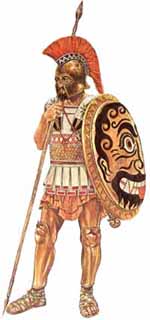|
THE INTELLIGENCE TEAM HAS EXCELLENT NEWS...
They have found backgrounds on each race... that is planning attacks in the near future
In short this is a small database of all known races....
|
|
|
The Mongols
Until the modern era, no military force could compete with that of the Mongols in terms of effectiveness and certainly mobility. Through the use of a well disciplined and trained army, that focused on mobility and careful planning, the Mongols carved out the largest contiguous empire in history. Often their armies fought on several fronts at once, a difficult enough task in modern history and practically unheard of during the medieval period.
Ongoing wars:
Move on the Asian Steppes.
Leaders: Genghis Khan
Age: 650yrs
Technology: Very forward mainly used ranged combat at which they were magnificent and had special units called Malgudias.
|
CELTICS
The Celtics are a barbaric tribe who had settled in present-day France the Celts invaded the Greco-Roman world, conquering northern Italy, Macedonia, and Thessaly. They sacked Delphi, plundered Rome , and penetrated Asia Minor, where they were known as Galatians. The "Cisalpine Gauls" of northern Italy were conquered by the greeks in the 2nd century BCE; Transalpine Gaul (modern France and the Rhineland) was subdued by the greeks in the 1st century BCE, and most of Britain came under greek rule in the 1st century CE. In the same period, the Celts of central Europe were dominated by the Germanic peoples. They now serve as the last threat to the greek empire. Ongoing wars: None.
Leaders : William Wallace
Age : 200yrs
Technology : Backward. Fight mostly with 2-handed swords and long bows
|
|
|
|
|
![]()
|
|
|
|
Greeks
Classical Greek warfare was the purest form of battle. The antithesis of modern day notions that favor stealth capability or covert guerilla tactics, Greek warfare displayed the honesty of two armies facing each other head on in broad daylight.
Outstanding valor rose from a man's ability to keep his nerve amidst such confusion and brutality. In a time when the outcome of battles rested on fellow soldiers trust for one another, an individual greeks reputation for strength and courage was his greatest asset in keeping his adjacent greeks bound in a line.
The nature of battle for the individual greek necessitated trust in one's fellow infantryman for personal and group survival, a tradition that resonates through the history of war, yet exemplified to its finest on the battlefield of Greek antiquity. Ongoing wars: None
Leaders: Alexander the Great.
Age: 1000yrs
Technology: Very forward had trained units called hopolites,fight a tactical war.
|
|
|
|
|
Vikings
The Vikings were Scandinavian men who had no professional standing army, and tactics and discipline seem to have been fairly rudimentary.
The Vikings were daring masters of the sea. Their swift wooden longships, equipped with both sails and oars, enabled them to mount piratical raids on the coastal monasteries and settlements of the British Isles, western Europe and beyond.
The famous 'berserks', whose name suggests they wore bearskins, may have fought in groups, and believed that Odin, the god of war, gave them both protection and superhuman powers so they had no need of armour. They would work themselves into a battle frenzy so intense it is said they bit on the edges of their shields, and could even ignore the pain of wounds.
Ongoing wars: None
Leaders: Eric The Red
Age: 500yrs
Technology: Barbaric they stopped at nothing,completely barainless warfare..but very powerful warrioirs called beserkers.
|
|
|
|
|
|
The Romans
The Roman Army was considered the most advanced of its time. The Roman Army created the Roman Empire - a huge part of Western Europe – and Rome itself greatly benefited from the riches that the army brought back from its conquered territories. The Ancient Romans were famous for their military skill.
The Roman Army developed fighting techniques that were linked to a ferocious training regime. All new recruits to the army became very fit and disciplined. Training was harsh, as were punishments for failure.
In a battle, new recruits were always placed at the front of the more experienced soldiers in the army. There were three reasons for this. The first was to give them confidence as behind them were experienced soldiers who had fought in battles before. Secondly, it stopped the new soldiers running away if their courage deserted them. Finally, those who were more likely to be killed in the initial phase of a battle were at the front. The hardened and experienced legionnaires were at the rear. The Roman Army could ill afford to lose experienced legionnaires whereas if a new legionnaire came through a battle alive, he would be blooded and experienced and a valuable addition to the army. If he was killed, then the loss of his inexperience would not be too great.
Ongoing wars: None
Leaders: Julius Caesar, King Hadrian
Age: 700yrs
Technology: Very forward,tactical and feirce had trained units called legionnaires.
|
|


